The year of Android Wear — An Android Central Roundtable
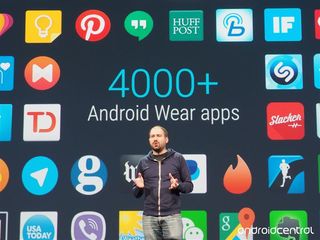
Android Wear — Google's operating system for wearables — is more than a year old. But in the tech world, a year can seem like an eternity. Or at least time enough to see a healthy leap from one generation to the next, whether we're talking about hardware, or software, or both.
There are currently seven Android Wear watches in the wild, with five of them still available for purchase directly from Google. The LG Watch Urbane, ASUS ZenWatch, LG G Watch R, Sony SmartWatch 3, Moto 360, Samsung Gear Live, and LG G Watch. They range from bland displays on your wrist to timepieces that could well pass for a decent-looking analog watch. They're still very much the first generation of Android Wear hardware, though the software has progressed quite a bit in their lifetime.
So let's take a look back at the past year of Android Wear, and where it stands for us, the editors of Android Central.
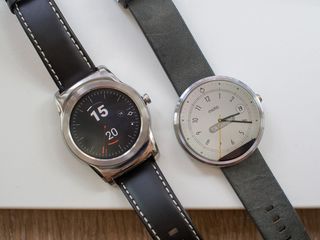
We did a series on this recently, but flat-out: What's your favorite Android Wear watch?
Russell: Moto 360.
Jerry: Moto 360.
Andrew: Moto 360.
Be an expert in 5 minutes
Get the latest news from Android Central, your trusted companion in the world of Android
Alex: Moto 360.
Phil: LG Watch Urbane. (Seriously, I don't know what's wrong with those guys either.)
Android Wear has been iterating, but there's something about it that just feels a bit stagnant after a year of use. What's wrong?
Russell: For most folks, Android Wear is still a notification dumpster on your wrist. Android 5.1 brought about some interesting changes for how apps function, but in many cases it still requires more taps to use the app on your wrist than it would to just pull your phone out. Streamlining is only going to get us so far in this process — app developers must do better about interactions on the wrist for these apps to actually be useful.
Jerry: We're finally finding out that your wrist may not be the best place to do everything. It's difficult to build a user interface that's both comprehensive and easy to use and the screen real estate doesn't lend itself well to all the information we want pushed to us — it's just too small. Google will figure things out (mostly because they aren't afraid to try anything) but I think we're going to need to see yet another major version change or two to fix the "overload" feeling of so much on such a little screen.
Andrew: Part of the issue is that most people out there who want a smartwatch don't really know exactly what they want out of it. They know they want notifications, maybe some voice actions and fitness information, but other than that there's not really a clear demand for specific features . And I think Google (and everyone else) isn't quite sure what to offer because of it, leading to products that just don't feel cohesive. It leads to this "throw stuff at a wall and see what sticks" approach that we see in smartwatches today.
Alex: With any new device category, it's going to take time to figure out what works best. In terms of hardware, we've seen a steady move towards rounded, more watch-like Android wearables in the past year. And on the software side I feel like Android 5.1.1 has made some big, important changes that move Wear beyond being that aforementioned notification dumpster. I'm much more likely to actually use apps on my wrist if the app drawer is just a tap away, rather than two taps and a frustratingly long scroll.
Phil: For me it sort of feels like a lack of focus. Google's bringing a bunch of great features into Android Wear, but there's still a lot developers have to do. How is it I still can't control my Nest with my watch via the official app? Or that Starbucks doesn't officially support it yet. (There are plenty of third-party options.) What can Google do to get more big names on board?
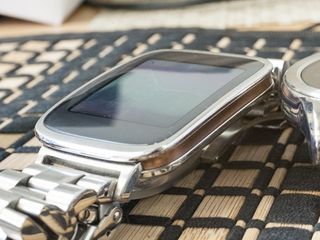
What's the one thing you wish Android Wear did that it currently doesn't do?
Russell: Multi-day battery.
Jerry: Pebble's Timeline. While not perfect, it's a better way to show you the things you want to see, but stays out of the way if you don't want to look.
Andrew: Power savings at the OS level that could enable full-day battery out of every watch, with the ability to go multiple days if a manufacturer is determined to make it a priority.
Alex: For me, I feel like the current crop of Android watches are running up against hardware walls more than software. Power management is the big one, which contributes to the largely bulky watches we've seen so far, as well as the single-day limit for battery life. But I'd also like to see the "flat tire" problem for displays solved without sacrificing automatic brightness.
Phil: I think I'm going to want contactless payments. And with the incoming Android Pay, it wouldn't surprise me if we get exactly that later this year.
Is Android Wear trying to do too much? Not enough?
Russell: I don't think it's a matter of too much or not enough. I think Android Wear isn't doing the right things out of the box to mold itself to the individual. There needs to be some kind of learning system for notifications, instead of a 20 minute user-led crusade to determine what goes on the watch. Google has nailed the behaviors for a screen mirror, but now the software needs to be smarter about how I interact with my wrist instead of waiting for my instruction.
Jerry: Yes. And yes. It's not that Android Wear is doing too much, it's the way it presents it all. I want reminded about a meeting at 2 p.m. on my wrist, but I don't need to know that it's Valentine's Day. On my phone, it's just a tiny icon in the status bar. On my watch, it blocks half my view. The same goes for most other notifications. I don't need everything, and there are few ways to filter out which reminders you want from an app.
Andrew: Building off of my answer to the first question, I think the biggest issue is that Android Wear tries to do too many different things. These little wrist computers are clearly capable of doing a lot and being useful tools in our lives, but the issue is that they do a lot of little things that aren't interconnected or supporting of one another. If designed properly, Android Wear and supporting apps can be powerful and useful without being overbearing and annoying — we're just not there yet.
Alex: The apps are all there, but managing them is kind of a mess. If I use a Moto 360 with my LG G4, for instance, I'll have Google Fit, Moto Body and LG Health all competing for my attention. Same deal with alarm apps, music apps and anything else that feels like hopping over to my wearable. It's a wrist-borne version of the Photos/Gallery nonsense we see on current Android phones.
Phil: Android Wear is sort of the stereotypical Google project. It does a lot of things pretty well. But Some features still feel like they're all over place. Do I know that it'll work with whatever fitness app I'm using? Or with my other connected appliances? The setup process, at least, is simple enough for anyone to use. But on the other hand when connection issues arise — and with Bluetooth there always are connection issues — you're quickly dumped back into the more technical areas.
What app on Android Wear could you not live without?
Russell: Hue Control.
Jerry: Gmail. Archiving mail from my wrist is glorious — though I'd rather have a way to only show mail that's marked important on my watch.
Andrew: I'd say it's a tight race between Hangouts (for all of my messaging needs) and Google Maps (for walking and driving directions).
Alex: Being able to filter through the mass of email I get every day with a minimal amount of metal overhead is my killer app. It's the core feature of any smartwatch, and Android Wear has gotten pretty good at it.
Phil: In order of importance: Gmail. Gmail, and then Gmail. But then again that's the most important app on my phone, too.
Do you think we'll ever see better battery life than what realistically is just a single day?
Russell: That depends on whether there's a continued focus on display resolution in this next generation. There's a push to make these devices smaller and thinner, as well as touch capable with great displays. The software is already getting better, and the processors will improve in the next generation as well. If we keep display tech relatively similar to what we've got now for a full generation, multi-day battery life is likely.
Jerry: Not until Samsung finally figures out S-fission. We will get more and more features, smaller and smaller devices, and any advancements in battery technology will be negated as soon as they arrive.
Andrew: Much like we've seen in phones, I have a feeling smartwatch manufacturers may end up pushing the envelope in other areas while keeping battery life at just a single day. As processors and other components get more efficient, we may see manufacturers use that bit of breathing room to make their next watches slimmer and with higher-resolution displays.
Alex: Nope. Manufacturers will release smaller, thinner watches before we'll get to multi-day battery life, and they'll be right to do so. Many current Android Watches are big and bulky by the standards of regular jewelry. Barring any unexpected revolution in battery or display tech, single-day battery life is here to stay.
Phil: There's only so much room in these things for battery. Until there's a real change in battery tech, it is what it is. As much as I'd prefer to get more than a day's use out of single charge, I've also gotten used to it.

While Android Wear watch design is improving, they all still have a distinct masculine feel to them. Do you think that'll ever change?
Russell: I disagree that the ZenWatch line and Sony Smartwatch line are distinctly masculine, but I'm also lacking in the appropriate hardware to make that call for an entire group of people. I will say it is unlikely we'll see too many distinctly feminine smartwatches. The best we'll get is a awkwardly pink band with a rose gold model of some sort. As the hardware gets smaller we'll see better support for slender wrists, but I doubt we'll see any grand shift away from the current design languages anytime soon.
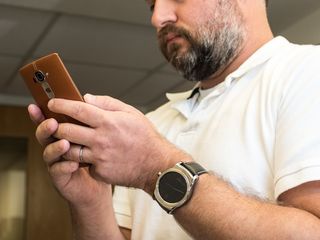
Jerry: I'm not dumb enough to think I should decide what women, or anyone else, want to wear. Apple convinced people that smaller was equal to feminine (there must be a switch on the RDF gun) without people going up in arms. Maybe other companies can do the same, maybe not.
In any case, my wife thinks the yellow and the white versions of the Sony SW3 look good.
Andrew: You wear a watch rather than just have it, and that means there's a lot of personal preference (independent of your gender) when it comes to watch design that you don't really see when it comes to choosing a phone. I'd say that as a group the current crop of Android Wear devices tend to be a bit more masculine in design, but the bigger issue is the physical size of these things — they're just too darn big for anyone with a smaller wrist. Most of the size issue comes down to the reality of fitting a processor, memory, sensors and battery into a watch, and unfortunately I don't see that changing dramatically soon.
Alex: The necessary physical size of these watches is a big part of the chunkiness and masculinity of their design. If battery and display constraints didn't require these things to be relatively huge, maybe smartwatch designers would be liberated to experiment with smaller, more neutral watches. That's aside from the chicken-and-egg problem of early-adopter tech being viewed as male-centric, and thus manufacturers tending to field more masculine designs as a result.
Phil: It better change. We're starting to see a little movement on that front with ASUS' new ZenWatch, but, again, there are physical constraints to these accessories, and they can only get so small. Design, however, certainly can adjust.
There are countless fitness trackers available but only one real "sporty" Android Wear device. See that changing in the future?
Russell: All of the OEMs seem to be trying to shoehorn fitness stuff onto their existing setup, and the current "sporty" Android Wear device hasn't exactly flown off the shelf. It's unlikely we'll see any huge swing to compete with fitness trackers.
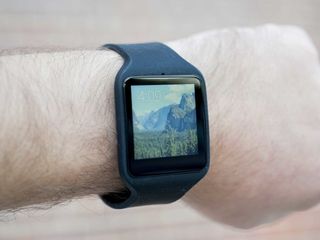
Jerry: Only when they can design a $300 watch that does fitness tracking as well as a $80 FitBit One. I think the folks making the watches will continue to work on what looks good on the wrist, and fitness tracking will stay a secondary feature.
Andrew: I would like to see manufacturers offering both stylish and sporty models at the same time rather than choosing one or the other. Sony was leaning in this direction by having a more modular design that could swap out the band and casing, but two distinct models really would help give both types of potential buyers something they want.
Alex: It's still early days for Google Fit, and most Android Wear manufacturers still try to funnel you into their own fitness ecosystems, most of which have nothing to do with Google's. I'd argue that Fit itself — which is still pretty janky on both phones and watches — needs to improve before Google and its partners start pushing more fitness-centric products.
Phil: It's a little hard to believe that in a world that's lousy with fitness trackers from just about anyone who can think to make one, we've only got a single fitness-centric Android Wear watch. And Sony did pretty well with the SmartWatch 3. But I can't believe we're not going to see more in the future.
Final thoughts
Russell: I really like the ideas that drive Android Wear. I'm hoping a circular watch with a design language similar to the Moto 360 with more capable hardware is released before too long, as I'm not a huge fan of the other round watches out there right now. As the software continues to improve, the general clumsiness we feel with this platform will go away and we'll start to see a focus on the wrist being a filter for the chaos in our pockets.
Jerry: It's nice that wearing a watch is "cool" again. I'm just waiting for the perfect mix of features and ease-of-use on one that looks good. We'll get there eventually.
Andrew: Android Wear has a lot going for it, primarily in its basic design and availability to multiple manufacturers to use it. In just a year we've seen watches steadily improve as the software itself has added even more features. It's still going to take several more software revisions for Google to really smooth things out and get Wear focused on some core competencies, but it seems it's up for the task.
Alex: Where the hell is the Huawei Watch? It seems like it's been half a year already, which is like two and a half Internet years.
Phil: What Alex said. But look at how far Android Wear watches have come in just a year. From the "display-on-a-wrist" LG G Watch to watches that actually have a chance at passing for normal. I'm not going to ask what else can be packed into such a small space — I'll just regret those words later. But I'm absolutely excited for it.
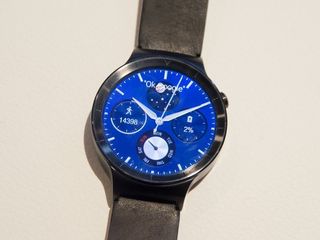
The infamous and still-unreleased Huawei Watch.

